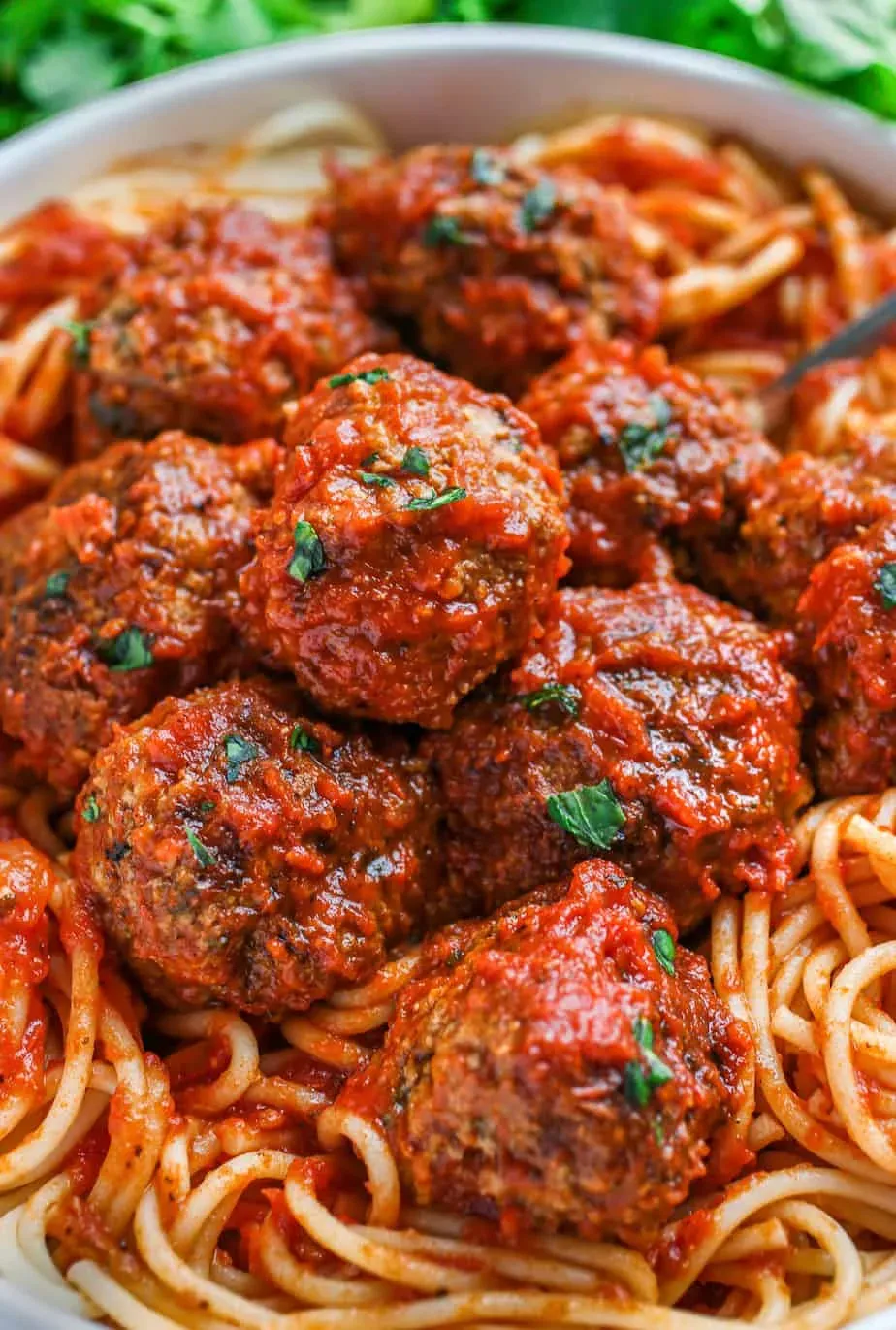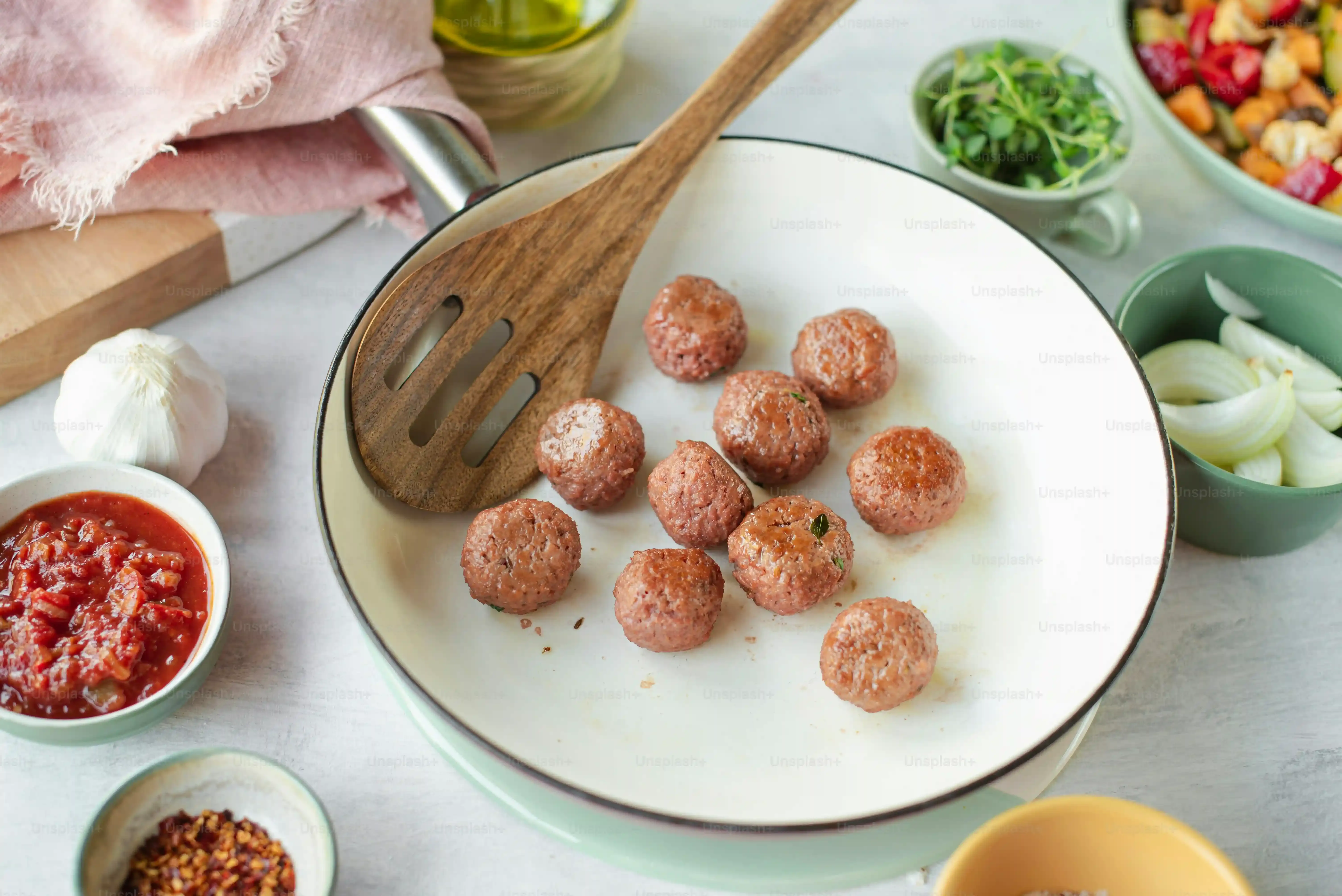Table of Contents
Let's be honest. You've probably tried making Italian meatballs at home. Maybe they turned out a bit... dense? Like little brown rocks? Or perhaps they lacked that certain something, that juicy, flavorful magic you get at a good Italian joint. It's a common kitchen disappointment. You follow a recipe, you mix the meat, roll the balls, and hope for the best, only to end up with something less than spectacular sitting in your Sunday gravy.
Finding the Best Recipes for Italian Meatballs: Where to Start

Finding the Best Recipes for Italian Meatballs: Where to Start
Navigating the Meatball Minefield Online
So you decided it's meatball night. Great. You type "best recipes for Italian meatballs" into the search bar, and bam – a million results hit you. Nonna's secret recipe! The ultimate tender ball! Quick and easy meatballs! It's enough to make you just order pizza. Everyone claims *theirs* is the one. How do you even begin to sort through the digital chaos to find something that won't disappoint?
Scrolling through endless food blogs, you see photos that look perfect (filters, anyone?) and ingredient lists that vary wildly. Some call for three types of meat, others just beef. Some swear by soaking bread in milk, others use dry breadcrumbs. It feels less like cooking advice and more like deciphering ancient scrolls. You just want a solid recipe that delivers on its promise, not another kitchen experiment that ends in shrugs.
What to Look for in a Promising Recipe
let's get tactical. When you're sifting through potential candidates for the best recipes for Italian meatballs, look for certain red flags and green lights. Avoid anything that promises "zero effort" or uses pre-made mixes; that's not cooking, that's assembling. A good sign? Recipes that specify the type of bread (stale Italian bread is classic) and how to prepare it (soaking is key for tenderness). Pay attention to the meat ratio – a mix of beef, pork, and sometimes veal offers depth.
Also, scrutinize the cooking method. Are they pan-frying first for color before simmering in sauce? That's a good sign. Recipes that just plop raw meatballs into sauce often result in a less desirable texture. Look for mentions of gentle handling when mixing and forming the balls; overworking the meat is a common pitfall leading to toughness. The details matter here, separating the contenders from the pretenders.
- Look for recipes specifying stale bread soaked in milk or water.
- Check for a mix of meats (beef, pork, veal).
- Ensure the method includes searing or baking before simmering.
- Read comments for real-world feedback (but take them with a grain of salt).
- Avoid recipes promising unrealistic speed or minimal ingredients.
Starting Simple and Building Your Foundation
You don't need Nonna's 100-year-old secret on your first go. The smartest way to find *your* best recipes for Italian meatballs is to start with a solid, basic version. Find a recipe that uses a classic meat mix (beef and pork is fine), stale bread soaked in milk, parmesan cheese, eggs, garlic, and parsley. Master that foundational technique of gentle mixing and searing.
Once you've got the basic, tender, flavorful meatball down, *then* you can start experimenting. Maybe you add a touch of veal, switch up the herbs, or try baking instead of pan-frying before the sauce. Building from a strong base means you understand the 'why' behind the ingredients and steps, making it easier to troubleshoot and adapt. Don't chase the "ultimate" recipe immediately; chase a solid, reliable one you can make consistently well.
Essential Ingredients for Truly Great Italian Meatballs

Essential Ingredients for Truly Great Italian Meatballs
The Foundation: Meat Matters
let's talk meat. This is the bedrock of your Italian meatballs. Using just lean ground beef is a rookie mistake. It's too dry, too dense. You need fat for flavor and tenderness. A classic mix involves beef and pork, often in a 50/50 or 60/40 beef-to-pork ratio. The pork brings moisture and richness. Some folks add veal, which adds tenderness and a milder flavor, perfect for a delicate meatball, though it's not strictly necessary for a fantastic result. The key is a blend with enough fat to keep things juicy as they cook.
Don't just grab the leanest ground meat you see. Look for ground beef that's around 80/20 lean-to-fat ratio, and ground pork that's not overly lean either. This fat renders down, basting the meatballs from the inside. Trying to make great meatballs with 93% lean turkey is like trying to win a drag race in a minivan – it's just not built for it.
The Binder: Beyond Just Breadcrumbs
Now, the binder. This is where many go wrong. Dry breadcrumbs are convenient, sure, but they absorb liquid differently and can lead to a tougher meatball. The traditional, superior method involves stale or day-old Italian bread, crusts removed, soaked in milk or water. The bread gets soft and mushy, then you squeeze out the excess liquid and crumble it into the meat mixture. This creates a much more tender, delicate texture than dry crumbs ever will.
Think of it like this: dry crumbs are like little sponges that swell inconsistently. Soaked bread is like a smooth paste that integrates seamlessly, providing moisture and lightness. Eggs are also crucial binders, holding everything together without making the meatballs rubbery. Don't skip the eggs; they're non-negotiable.
Why soak bread instead of using dry breadcrumbs?
- Results in a more tender meatball.
- Adds essential moisture.
- Integrates more smoothly into the meat mixture.
- It's the old-school, proven method for a reason.
Flavor Boosters: The Aromatics and Cheese
Salt and pepper are obvious, but the real flavor comes from garlic, fresh parsley, and grated Parmesan cheese. Fresh garlic, minced finely or grated on a microplane, is worlds better than garlic powder here. It provides that pungent kick that defines Italian cooking. Don't be shy with it.
Fresh parsley adds a necessary herbaceous note that brightens the rich meat. Flat-leaf parsley is generally preferred. And Parmesan? Essential. Use good quality, freshly grated Parmigiano-Reggiano if you can. The stuff in the green can is... well, it's salty dust. Real Parmesan adds a depth of nutty, salty flavor that permeates the entire meatball. A little pinch of red pepper flakes isn't traditional everywhere, but it adds a nice subtle warmth if you like.
The Role of Liquid: Milk or Water?
Besides the liquid you soak the bread in, some recipes call for adding a splash of milk or water directly to the meat mixture. This might seem counterintuitive, but it helps keep the meatballs moist as they cook. It adds just a bit more insurance against dryness. Milk adds a touch of richness, while water is neutral. Either works, but don't drown the mixture; just a tablespoon or two for maybe a pound and a half of meat is usually enough.
What are the must-have flavorings?
Ingredient | Purpose | Why it Matters |
|---|---|---|
Fresh Garlic | Aromatic base | Provides classic Italian punch; use fresh, not powder. |
Fresh Parsley | Herbaceous brightness | Cuts richness, adds freshness; flat-leaf is best. |
Parmesan Cheese | Salty, nutty depth | Adds complexity and umami; grate good quality cheese yourself. |
Techniques That Elevate Your Italian Meatballs
Gentle Hands Make Tender Meatballs
you've got your perfectly mixed ingredients – the meat blend, the soaked bread, the cheese, the aromatics. Now comes a critical step: mixing and forming. This isn't bread dough; you're not developing gluten here. Overmixing is perhaps the single biggest mistake people make. It compacts the meat proteins, leading to tough, rubbery meatballs. Mix just until everything is combined. Use your hands, not a stand mixer. Feel the texture. It should be soft and slightly sticky, not a dense paste.
When you form the balls, be gentle. Don't pack them tightly like you're making snowballs for a fight. Roll them lightly between your palms until they just hold their shape. Aim for roughly the same size so they cook evenly. A golf ball size is pretty standard. Some people like them smaller, some bigger, but consistency is key. Think of them as delicate little clouds you're shaping, not compression spheres.
The Two-Step Cooking Secret
Just dropping raw meatballs into simmering sauce is a recipe for... well, sad, grey meatballs. The best recipes for Italian meatballs employ a two-step cooking process for a reason. First, you need to brown them. You can pan-fry them in a little olive oil until golden brown and slightly crusty on all sides. This develops flavor through the Maillard reaction and helps them hold their shape in the sauce.
Alternatively, you can bake them on a wire rack set over a baking sheet until they're browned. Baking is less messy if you're doing a large batch, and it gives you more even browning without constant turning. Once they're nicely browned, *then* they go into your simmering tomato sauce to finish cooking through, absorbing all that lovely flavor and becoming incredibly tender. Skip the browning step at your own peril.
Which browning method is right for you?
- Pan-frying: More control over browning, develops deeper crust on contact points, requires more attention.
- Baking: Easier for large batches, more even browning, less hands-on, slightly less intense crust.
Beyond the Basic: Variations on the Best Recipes for Italian Meatballs

Beyond the Basic: Variations on the Best Recipes for Italian Meatballs
Adding Different Flavors to Your Mix
Once you've mastered a classic meatball recipe, you'll start thinking, " what else can I do?" This is where you can get creative and truly make *your* best recipes for Italian meatballs. Tired of just beef and pork? Try adding Italian sausage meat (casings removed, obviously) to the mix. It brings fennel and other spices right into the ball, adding a whole new layer of flavor without much effort. Just make sure it's not overly fatty, or things get greasy.
Think beyond the standard parsley and garlic too. A pinch of nutmeg grated into the mixture is surprisingly common in some Italian regions and adds a subtle warmth. Some recipes call for a tiny bit of finely minced onion or shallot, sautéed first to soften and sweeten. Just be careful with raw onion; it can make the meatballs watery or give them a raw, pungent bite. A little lemon zest can also brighten things up unexpectedly.
Exploring Different Cooking and Serving Styles
While simmering in tomato sauce is the quintessential way to enjoy Italian meatballs, it's not the only path. Baking them fully instead of just browning is a great option if you want a firmer meatball, perhaps for serving as appetizers. You can bake them until cooked through, then toss them in a glaze (like a balsamic reduction) or serve them simply with a sprinkle of Parmesan and fresh basil. It’s a drier cook, sure, but for certain applications, it works.
Consider size too. Mini meatballs (polpettine) are fantastic in brothy soups like minestrone or pasta e fagioli. They cook super fast and are bite-sized delights. Larger meatballs require longer cooking time, especially in sauce, to ensure the center is cooked without the outside turning to mush. The principle of gentle mixing and proper binding still applies, regardless of size or final cooking method.
What are some ways to change up classic meatballs?
- Swap some ground beef/pork for Italian sausage.
- Add a pinch of grated nutmeg.
- Include finely minced, sautéed onion or shallot.
- Try a little lemon zest for brightness.
- Bake them fully for a different texture.
- Make mini meatballs for soups.
Your Meatball Journey: From Rock Hard to Revered
So there you have it. Moving past those sad, dense meatballs and towards something genuinely delicious isn't magic; it's method. It requires paying attention to the details we've covered – the right mix of meats, understanding moisture, and handling with care. The "best" recipe is ultimately the one you tweak and perfect through practice, but these foundational techniques will get you miles ahead of where you started. Stop making meat rocks and start making meatballs worth sharing. Or not sharing. That's fine too.